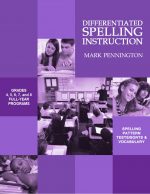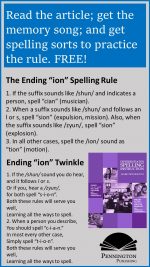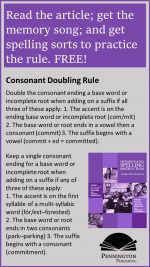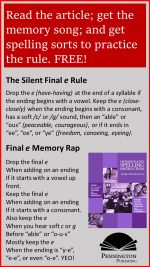Why Teachers Have Failed Their Students in Spelling
During the 1975 to 1995 “whole language” era, teachers complied with conventional wisdom and threw out their spelling workbooks, the traditional weekly spelling and/or vocabulary test, and direct vocabulary instruction. Spelling was relegated to the role of an editing skill to be incidentally “caught, but not taught” through peer editing or, perhaps, the scientific process of osmosis. Since editing was the second-to-last chart on the teacher’s writing process bulletin board, the spelling “mini-lessons” were frequently omitted because the picture re-takes or sugar cube missions ate up all available class time. Similarly, direct vocabulary instruction was considered “rote learning” and was usually limited to pre-teaching a few, usually obscure, words before launching into the next piece of literature. Most vocabulary instruction was left, exclusively to the individually-played, implicit game of context clues “hunt and peck.” Teachers hoped that teacher read-alouds, pajama-reading-days, and the Scholastic® Book Faire would naturally develop student vocabularies.
The results of this grand experiment have clearly been disastrous in the areas of spelling and vocabulary development. Standardized spelling and vocabulary test scores are down. A significant number of students are now graduating high school and college without having mastered conventional spelling. College professors complain about having to “dumb-down” instruction to be able to communicate with a new generation of rap-talking, IM (Instant Messaging), mono-syllabic freshmen. It may be unfair, but society judges poor spellers and wordsmiths quite harshly, and we have not done a service to our students by shortchanging effective spelling and vocabulary instruction.
How Teachers Teach Remedial Spellers
“Rafael is one of my brightest and more creative eighth grade students, but poor spelling inhibits his writing. He just can’t get down on paper what he wants to say. Rafael continually makes the same spelling mistakes in his writing, now matter how many times I red-mark them. Memorizing the list of weekly spelling words has never helped Rafael improve his spelling; year after year, he has lagged further and further behind his classmates.”
How Teachers Should Teach Remedial Spellers
Clearly, students like Rafael are not receiving any real spelling instruction. Teachers should assess their students, using an effective diagnostic spelling inventory. Then, teachers need to use worksheets, word lists, word sorts, and small group instruction to teach to these diagnostic deficits in the “Within Word” consonant and vowel sound spelling stages.
How Teachers Teach Accelerated Spellers
“Kenny is a precocious fifth grade student of mine who clearly has a knack for spelling. On his Monday pretest, Kenny rarely misses any words. I give him the challenge words from the spelling workbook, but Kenny usually knows how to spell these too. If I give him the sixth grade spelling workbook, next year’s teacher won’t have anything for him at all. Kenny rarely makes spelling mistakes in his writing because he selectively avoids using difficult spelling words.”
How Teachers Should Teach Accelerated Spellers
Clearly, students like Kenny are not receiving any real spelling-vocabulary instruction. Kenny and your other grade-level or accelerated spellers need to be challenged at the “Syllable-Juncture” and “Derivational Constancy” stages of spelling-vocabulary development.
*****
Differentiated Spelling Instruction is the full-year grades 4, 5, 6, 7, and 8 spelling patterns series (American and Canadian English versions), featuring weekly grade level word lists, tests, and spelling sorts plus diagnostically targeted worksheets to help students master previous grade level spelling patterns. In other words, students catch up while they keep up with grade level instruction.
The research-based program resources help students orthographically map the sound-spelling patterns and retain what they have learned. Students learn the conventional spelling rules, spelling-vocabulary connections, and foreign language influences they need to write with confidence. No silly themed lists of colors, animals, or words that end with “ly.”
This no-prep program is easy-to-teach and doesn’t take up too much instructional time. You do have other subjects to teach!












